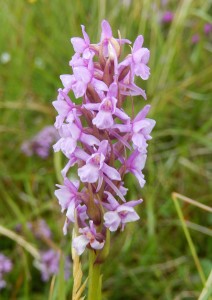
I’m used to seeing Marsh Orchids up here in Scotland, but I’d always associated the Fragrant Orchid with chalk and limestone. However, I keyed it out with James Merryweather’s very helpful Key for the Identification of Orchids Common in Western Scotland, and there it was, Gymnadenia conopsea, growing among the heather and bilberries with no chalk in sight. Its jizz is quite unlike the Marsh Orchids, with slim unspotted leaves, pale unstreaked flowers, and an unobtrusive long slim spur behind each flower.
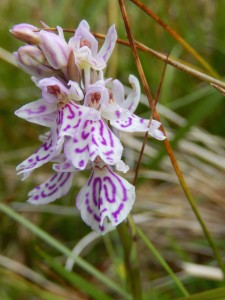
The Marsh Orchid is quite variable, usually boldly marked like this one in purple with stripes and loops, but sometimes almost white all over. It’s mostly rather short. The paired pollinia are visible inside a couple of the flowers.
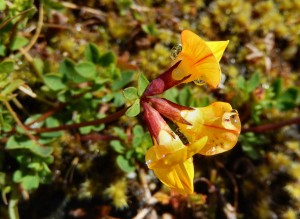
Another little plant that I’d not have associated with rainswept moorland is the Birdsfoot Trefoil (or, Bacon and Eggs from its rich red and yellow colours). It is happy in warm dry lawns; but equally at home here on disturbed ground where the competing plant cover is conveniently low.
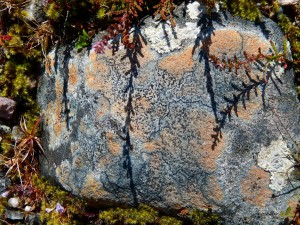
More obviously Highland in character are the tough lichens forming orange and black patches actually in the hard weathered rocks on the moor. The black discs are the apothecia of one of the species, containing the spores of the lichen fungus; they have to meet up with the single-celled algae to re-form the lichen partnership or symbiosis.
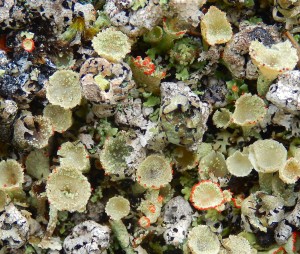
The miniature world of lichens is able to surprise even people who know their local environment well. The Cladonia ground-living lichens include shrubby species that make excellent tiny trees for railway modellers and architects. The same genus contains several species of cup lichens, some coarse and scaly like the common cup lichen (C. conoiocraea), some tall and slim like C. fimbriata, some with elegant red apothecia around the edges of their cups. This mixture of lichens, including some leafy grey Parmelia saxatilis, was growing on a rock beneath a light canopy of Downy Birches.
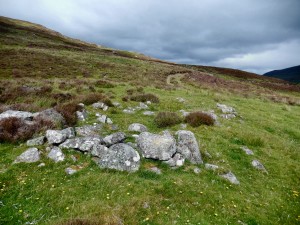
In the old system of transhumance, the women and children took the cattle up to hill pastures and lived in shielings during the Highland summers. These are marked today by small rectangles of grey stones, all that is left of the humble buildings, and bright green grassy areas among the brown of the heather.
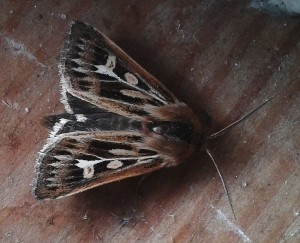
The Antler Moth is sexually dimorphic, the female being larger and with a slightly different wing pattern. Appropriately for a species that shares its moorland habitat with the Red Deer, it has a whitish antler pattern on its wings. The caterpillars eat purple moor-grass, sheep’s fescue and matgrass.
